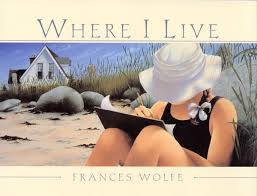I often hear students complain about how boring Social Studies is, how it's just a bunch of stuff that happened long ago and they hate having to remember people and dates that mean nothing to them. Thankfully, in the last few years children's literature has really exploded in historical fiction. These are my favorites and although all but one are picture books, older students still get touched by these characters and the injustices, bravery, and pain suffered by those they represent.
Rose Blanche, Christopher Gallantz and Roberto Innocenti - Rose is a young German girl who gets curious about trucks passing through her town and decides to follow one after seeing a boy jump out of one only to be thrown back in by the soldiers. What she finds is a concentration camp and she begins to save and steal food to take to the children at the camp. I love that it shows students that all Germans were not in agreement with the Nazis and it leads into talking about how the authors used the German resistance group's name as the title and main character's name.
The Harmonica, Tony Johnston - This book tells the story of a young boy taken to a concentration camp and separated from his family. The officer in charge likes how the boy plays his harmonica so his life is saved by being able to play for the officer every night.
Terrible Things, Eve Bunting - This is an allegory of the Holocaust. The setting is the woods and the "terrible things" repeatedly come to take different animals away for absurd reasons while the other animals look away, until it is their turn.
Erika's Star, Ruth Vander Zees and Roberto Innocenti - By far, this book generates the most outrage and discussion by students. As it begins the narrator tells of a lady he met while visiting Germany and the lady begins to tell her story by saying she doesn't know her name, her birthday, or her parents but she knows they saved her life as they traveled on a train to a concentration camp.
Luba, The Angel of Bergen-Belsen, Luba Tryszynska-Frederick, Ann Marshall and Michelle Roehm McCann - This is the truly amazing true story of how Luba, along with the women in her concentration camp, saved children who had been separated from their parents by hiding them in their sleeping quarters.
So Far From the Sea, Eve Bunting - As the story begins, a family is going to visit the grandfather's tomb and the father tells the story of how his father's family was taken to a Japanese internment camp due to the fear Americans had after Japan attacked Pearl Harbor.
The Bracelet, Yoshiko Uchida - A Japanese-American girl is confused when her family is taken to an internment camp. She can't understand why. She's just like her best friend. She's a girl scout, for goodness sake!
The Devil's Arithmetic, Jane Yolen - The only chapter book in the mix is a story that begins in present time with a 12-year old girl who doesn't see the point of celebrating a Jewish holiday hearing the same stories every year. Suddenly, she is transported back to a Polish village just as the villagers are taken to a death camp. The story unfolds telling of the apalling conditions of their travel and life at the camp.
The Butterfly, Patricia Polacco - Monique lives in a small French village occupied by the Nazis. She begins to see what she thinks is a ghost in her bedroom at night and soon finds out that this young Jewish girl and her family have been hiding in her basement. Her mom is part of the French resistance.
One of my favorite lessons with these picture books, before beginning any talk about this in Social Studies, is to divide the class into groups and hand each group a book with the strict directions to not read any of it (students look at me like I'm crazy), but to only pay attention to the pictures and jot down their thoughts, questions, and reactions. Warning, it won't be a quiet lesson because students immediately want to talk about what they're seeing so groups get into great discussions. To keep them from reading the text, you have to give them only about 10 minutes per book. We rotate the books around the room and later group share their thinking. As you probably imagine, students can't wait to read the books after that, which they do during their independent reading.



